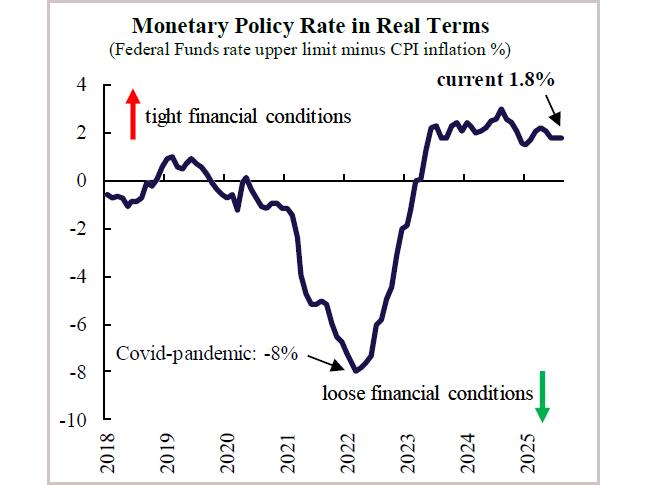What Do Interest Rates Reveal About US Economy?
Doha, Qatar: A disruptive agenda by President Trump has pushed economic policy uncertainty in the US to unprecedented levels. The new administration recently placed monetary policy at the center stage, aggressively advocating for significant policy rate cuts, and pressuring Federal Reserve officials to implement a more accommodative monetary policy.
In the US, this represents a shift in the governance of a process that is typically highly technical. Usually, monetary policy decisions are based on the outlook for key macroeconomic variables and a careful calibration of the impact of interest rate changes on economic activity and prices. This process is carried out with thorough deliberation by members of the Federal Open Market Committee (FOMC) and their staff, historically insulated from political pressures, QNB said in its economic commentary.
The emergence of the new regime has disturbed financial markets, which displayed significant fluctuations as investors try to find the appropriate levels of interest rates necessary to price assets under the new macroeconomic environment. First, the steepening of the real yield curve indicates cooling growth expectations. A benchmark measure of the slope of the real yield curve is the difference between the 10-year and 2-year yields of Treasury inflation-protected securities (TIPS). These securities strip out the inflation rate, reflecting changes in real interest rates. A widening of this gap, signals that markets expect decelerating economic activity in the short-term relative to the long-run.
Second, under current economic conditions real interest rates are at highly-restrictive levels. The real interest rate adjusts nominal interest rates by the rate of inflation, reflecting the true cost of credit by taking into account changes in the prices of goods and services, and is therefore a key determining factor of consumption, investment, and overall economic activity. The upper bound of the monetary policy rate stands at 4.5% which, with the inflation rate at 2.7%, implies a real rate of interest that is close to 1.8%. Third, short-term Treasury nominal yields closely track the path of the federal funds rate expected by the markets over the life of a particular note. This year, the 2-year UST yield has fallen 60 bps, from a peak of 4.40% in January to close to 3.80%.
All in all, interest rates are pointing to a mild“stagflation” scenario, where underwhelming economic growth combines with inflation still above the 2% target of monetary policy. Against this backdrop, FOMC members have underlined a“shifting balance of risks,” with more weight on weakening economic growth, and markets expecting a policy cycle that will take the benchmark interest rate to 3% by end-2026.

Legal Disclaimer:
MENAFN provides the
information “as is” without warranty of any kind. We do not accept
any responsibility or liability for the accuracy, content, images,
videos, licenses, completeness, legality, or reliability of the information
contained in this article. If you have any complaints or copyright
issues related to this article, kindly contact the provider above.
Most popular stories
Market Research

- What Does The Europe Cryptocurrency Market Report Reveal For 2025?
- United States Kosher Food Market Long-Term Growth & Forecast Outlook 20252033
- Utila Triples Valuation In Six Months As Stablecoin Infrastructure Demand Triggers $22M Extension Round
- Meme Coin Little Pepe Raises Above $24M In Presale With Over 39,000 Holders
- FBS Analysis Highlights How Political Shifts Are Redefining The Next Altcoin Rally
- 1Inch Becomes First Swap Provider Relaunched On OKX Wallet






















Comments
No comment